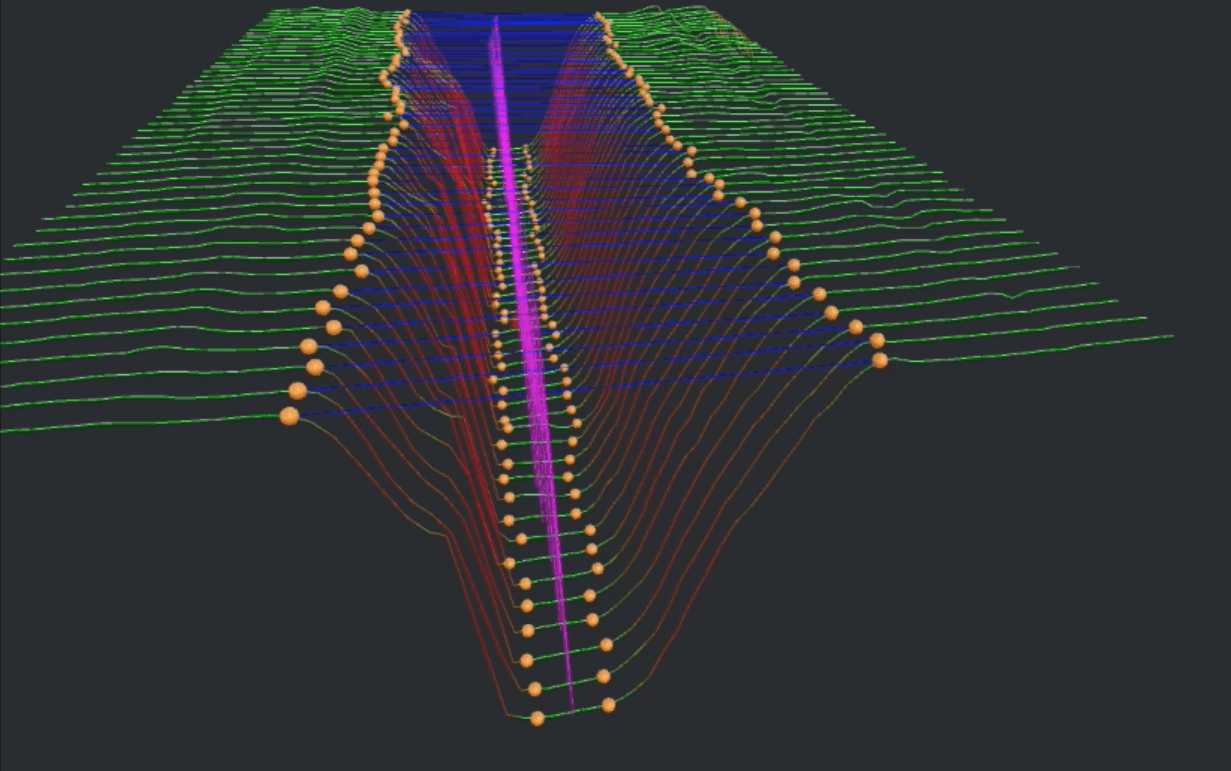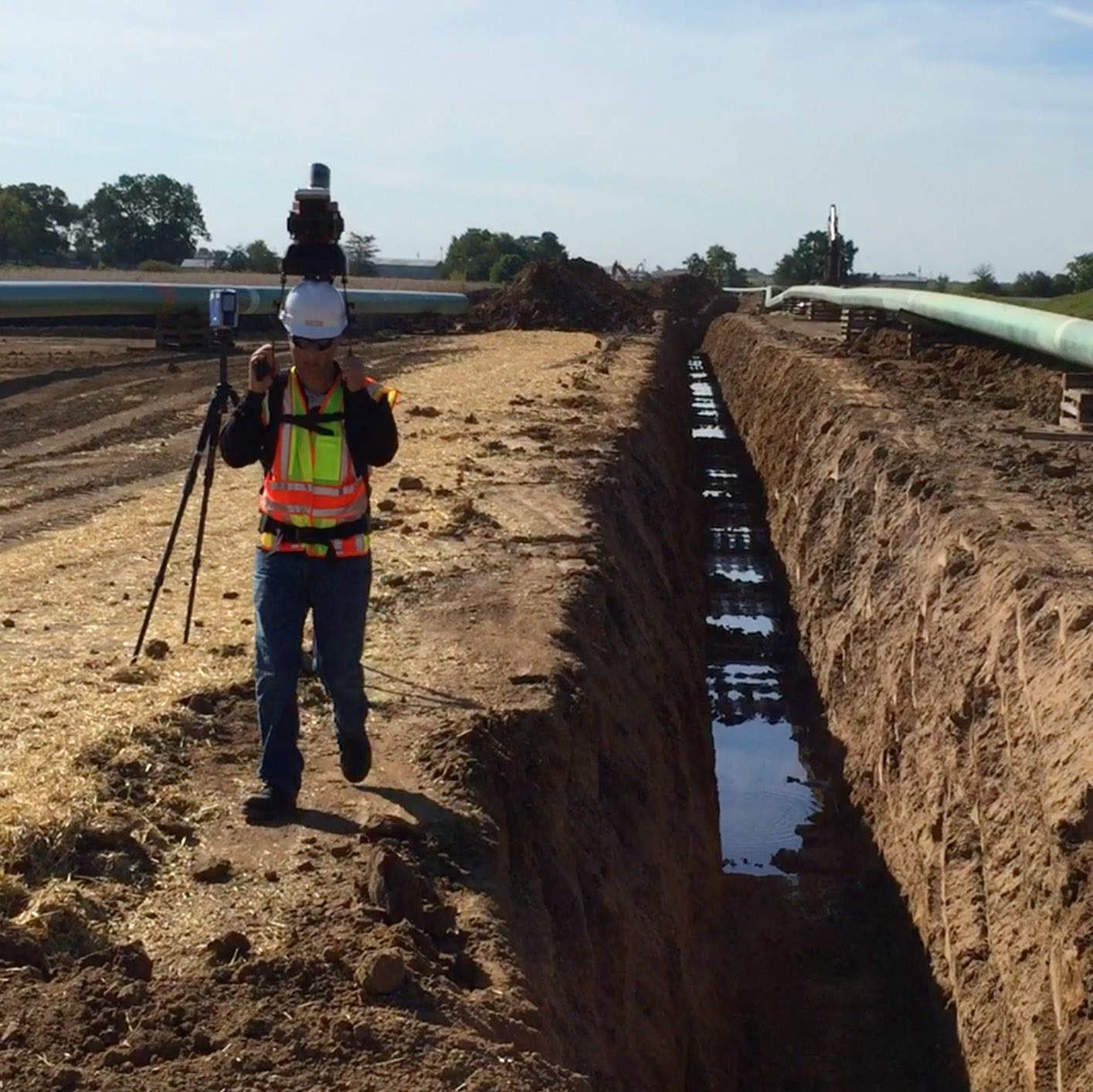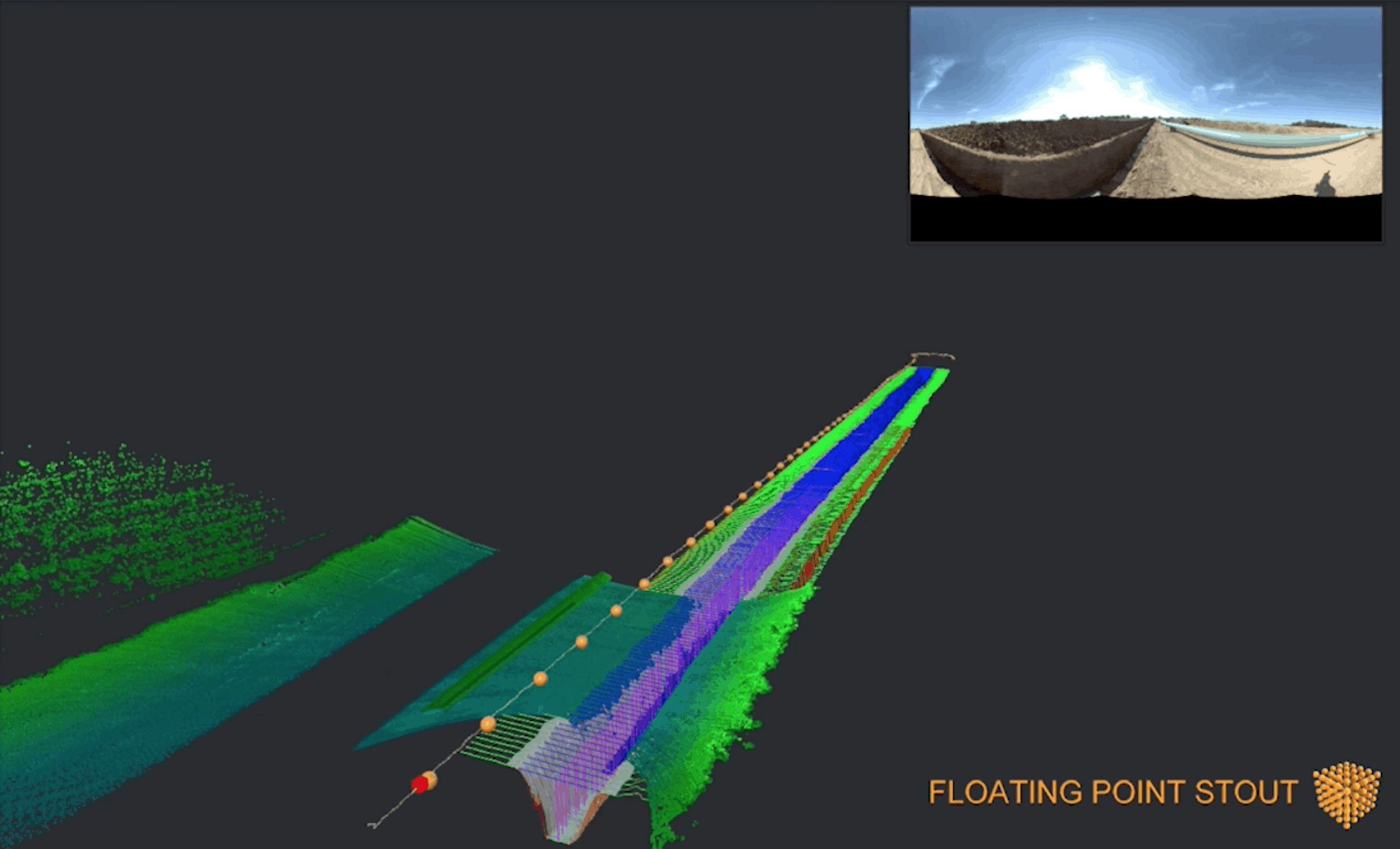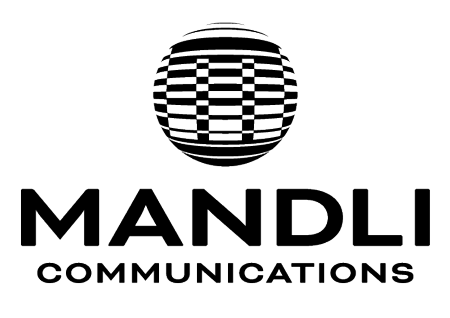
Introduction
In November 2015, Mandli Communications collected data for an energy pipeline company in Illinois. The energy company was investigating different methods for inspecting the pipeline prior to burying it. Mandli was invited to visit the site of the pipeline, collect data, and submit a presentation to the company on the collection and processing methods used. The goal of the project was to provide the energy company with a reliable process to allow inspectors in the field to analyze pipe and end treatments for inventory and defects.
Challenge
When a problem arises on an underground pipeline, it’s difficult to know for sure what the problem is or exactly where it’s located. There are almost always time constraints and a bit of panic involved due to the environmental concerns of hazardous materials spilling into the Earth.
Many pipelines use manual rating processes during the installation phase, usually consisting of an individual taking measurements at regular intervals along the pipeline. The results are often unreliable, inaccurate, and poorly recorded. In addition, if there’s a problem on the pipeline years later, the company has to rely on the information that the inspector provided many years ago.
As a result, the pipeline often needs to be shut down until the problem and location can be identified. Because the pipeline is buried, this can take days or even weeks, wasting time, money, and resources.

Maverick Solution
Mandli proposed the use of Maverick, a highly portable mobile mapping system that combines high-resolution 360 degree imaging, high-definition LiDAR, and an integrated position and orientation system to provide a robust and multi-functional dataset. The energy company could use the dataset to analyze pipe and end treatments for inventory and defects.
Mandli sent a two-person crew to the site of the pipeline to collect data. The incredible portability of the Maverick allowed the crew to walk alongside the trench, collecting data with the Maverick and its backpack mount.

Mandli: the leader in mobile data collection.
Results
The data emerging from the Maverick was run through Maverick’s post-processing software, Distillery, and then delivered to a third-party, Floating Point FX. FPFX provided 3D modeling of the pipeline and trench as part of the final delivery to the energy company.
Through the use of the Maverick, Mandli was able to provide the energy company with tangible, accurate results that can be kept on file indefinitely, allowing for personnel from the energy company to revisit the data and see exactly what is underground once the pipeline has been buried. Ultimately, this results in a quicker fix, shortening the length of a hazardous material spill, less pipeline downtime, saving time, money, and resources.


